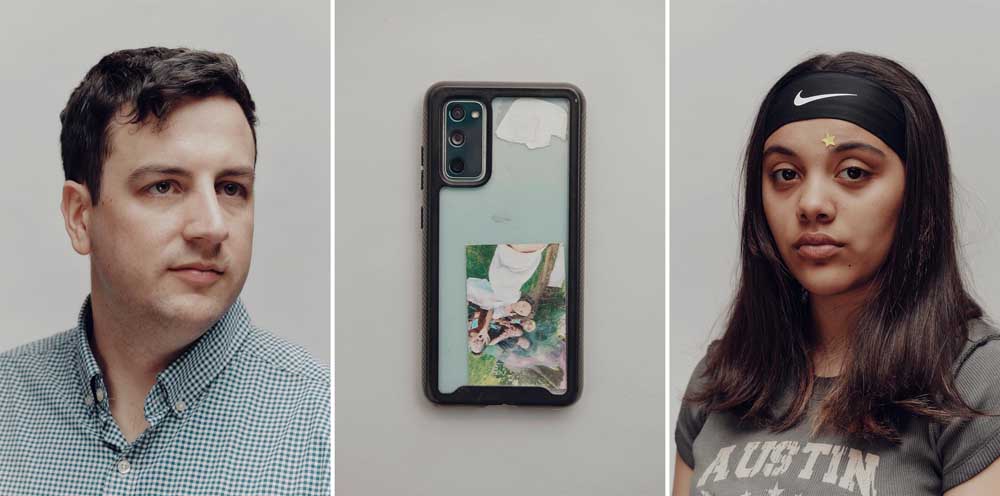How a Connecticut middle school won the battle against cellphones
Published 9:00 pm Thursday, May 2, 2024

- Science teacher Dan Connolly, left, praised the new cellphone policy. Student Serenity Erazo, right, said it upset her at first.
When Raymond Dolphin became assistant principal of a middle school in Connecticut two years ago, it was clear to him that the kids were not all right.
The problem was cellphones. Students were using the devices in class, despite a rule against it. Social media was exacerbating nearly every conflict among students. So in December, Dolphin did something unusual: He banned them.
The experiment at Illing Middle School sparked objections from students and some parents, but it has already generated profound and unexpected results.
Scores of schools across the country — from California to Indiana to Pennsylvania — have taken similar steps to remove cellphones altogether rather than rely on rules around their use.
Those decisions come amid rising bipartisan alarm over the ways cellphones and social media may be harming children.
At 7:50 on a March morning, Dolphin hustled toward his usual spot near the school entrance to make sure the system was working. Moments later, more than 800 middle school students — some boisterous, some sleepy — began flowing through the doors in a river of bulky backpacks and puffy jackets.
Those who had cellphones in their hands slipped them into individual gray pouches made of synthetic rubber. They clicked the magnetic lock at the top of their pouches shut, then placed them into their backpacks or held them up to show teachers. The pouches would stay with them, locked, until dismissal at 2:45 p.m.
Introducing the pouches — made by a California-based company called Yondr — was no cakewalk. Many students arriving that morning said they were still sore. “I cried,” said Michael Wilson, 14, about when he learned his phone would become inaccessible during the school day. He signed a last-ditch petition posted on the cafeteria wall urging the administration to reconsider.
Chioma Brown, in a gray sweatsuit and Crocs, slid her cellphone with a glittery cover into her pouch and locked it. She, too, was mad at first. As time passed, her feelings have shifted. “You can focus more” on classes, she said. These days she sometimes forgets that she has her phone with her.
Teachers who were initially skeptical that the pouches would work say they’ve been transformative. Dan Connolly, an eighth-grade science teacher, said he used to repeat the same reminder at the start of each period, six times a day: Put away your cellphones and take out your headphones.
“Now the first thing I say is, ‘Good morning,’ not ‘Take your AirPods out,’” Connolly said.
It’s not as though Illing had allowed cellphones in class previously. Like three-quarters of all U.S. schools, it didn’t. But such policies rely on individual teachers to carry them out.
Objections from parents fell into three main categories. Some worried about reaching their children in an emergency. A small number had children struggling with anxiety who used their cellphones to listen to music or access meditation apps. Others just liked the convenience of being in touch with their children during the day.
The school reminded parents that there is at least one landline phone in every classroom — and in many cases two. Teachers also still have their cellphones in case they need to call 911 (the pouches also are not “bank vaults,” Dolphin added, and can be cut open in an emergency).
In the worst-case scenario — a school shooting — students should focus on hiding and staying quiet, Dolphin said. “The whole idea that you want every kid to be taking out a phone and calling parents is the exact opposite of the safety protocols,” he said.
Four months into the pilot, most parents seem reconciled to the pouches or appreciate them. So long as there are plans in case of an emergency — a school phone that is readily accessible, for instance — the pouches are “totally fine with me,” said Donaree Brown, whose daughter Chioma is in eighth grade.
Students confirmed that the disappearance of cellphones has, in turn, stimulated something old-fashioned. Serenity Erazo, 14, said that she used to watch TikTok or listen to music after completing her class work. Free time is a little duller now, she said, but the students have adapted: “We’ll just find conversation, we figure it out.”








